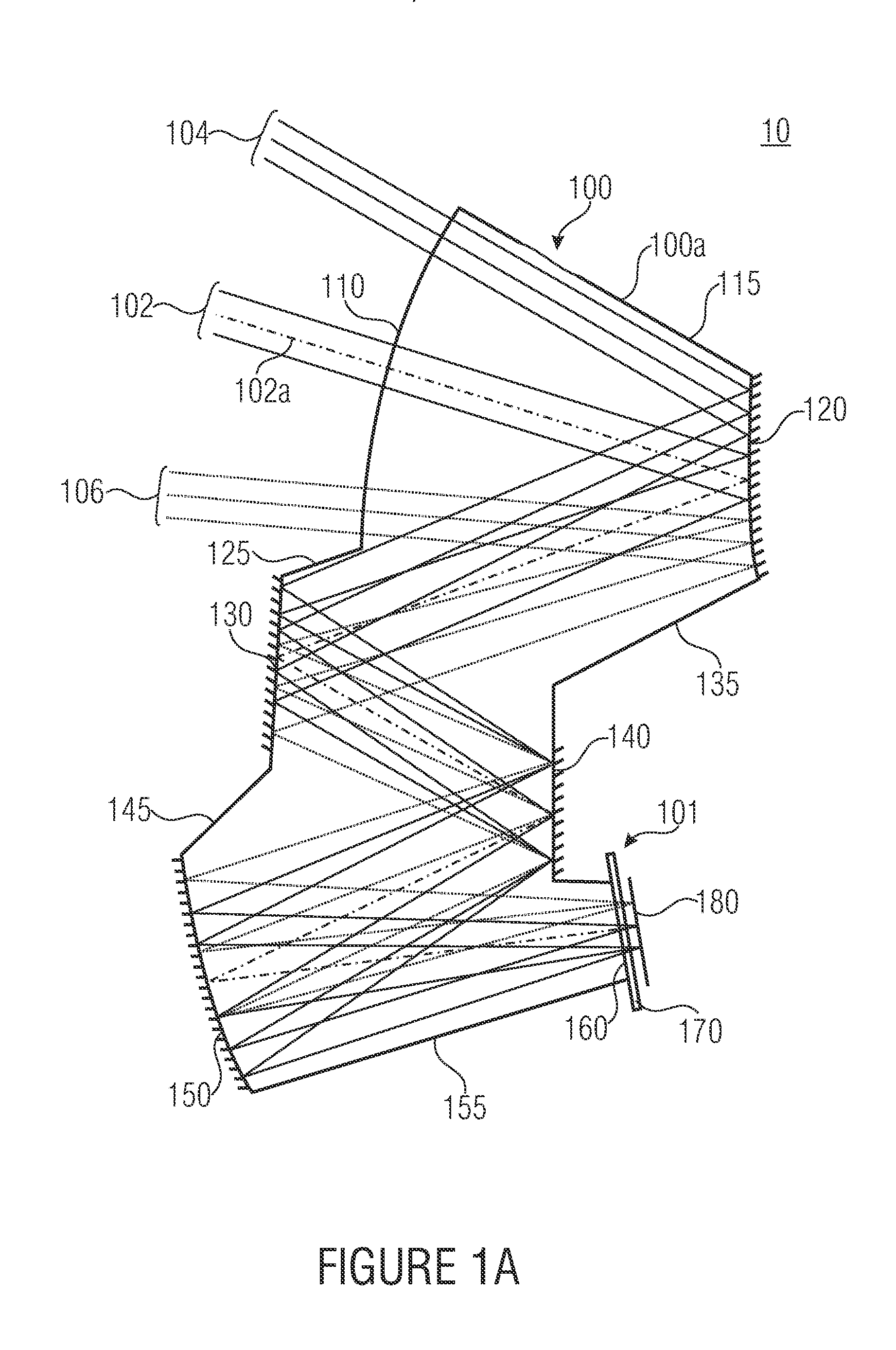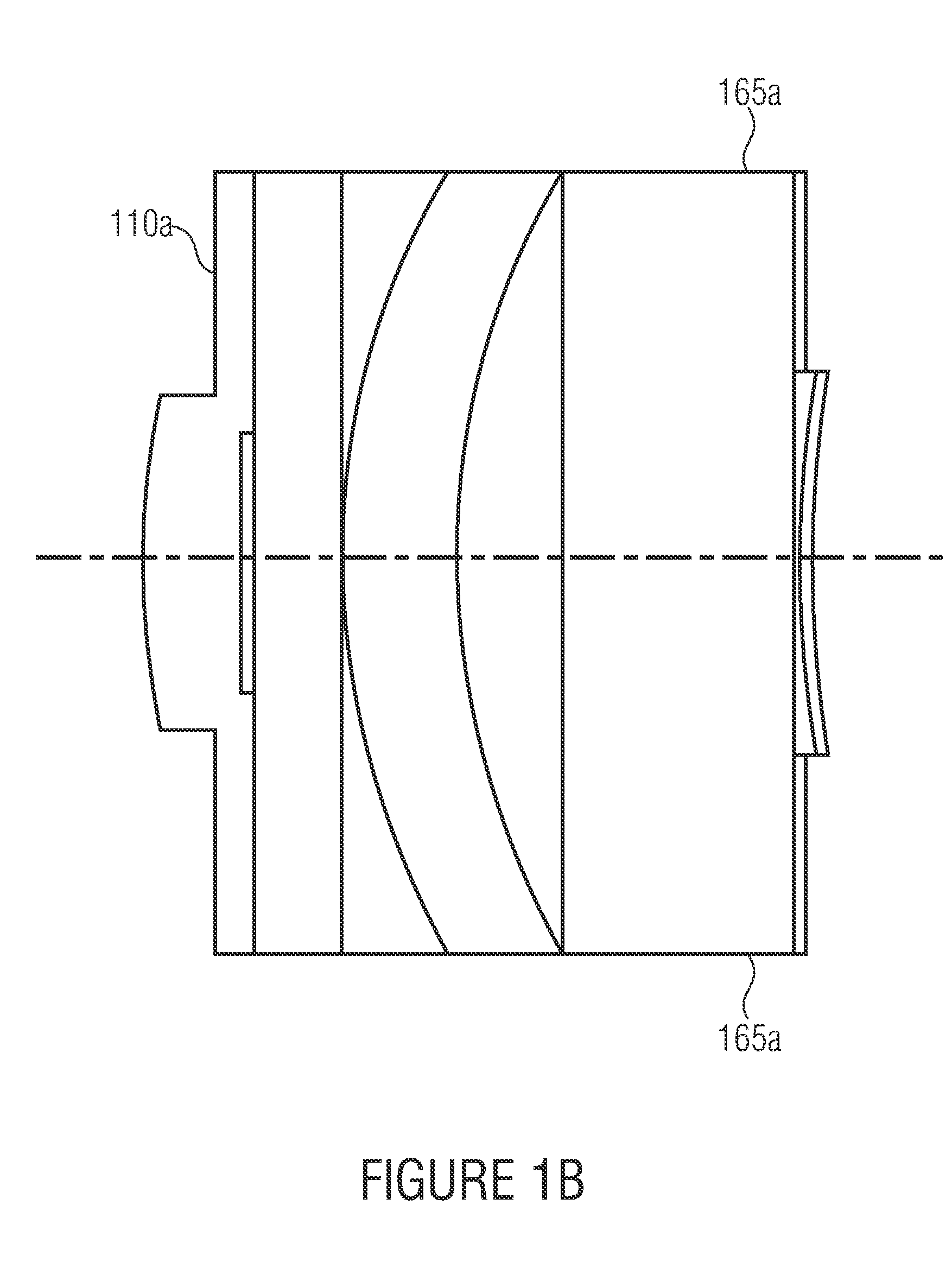Objective
a technology of objective and mold, applied in the field of objective, can solve the problems of increasing mold production costs, unsuitability for large volumes, and inability to meet the requirements of large-scale production, and achieve the effect of low production price of mould for the objectives, and low number of optical functional areas
- Summary
- Abstract
- Description
- Claims
- Application Information
AI Technical Summary
Benefits of technology
Problems solved by technology
Method used
Image
Examples
Embodiment Construction
[0026]FIGS. 1a-c show an image-capturing system having an objective 100 according to an embodiment and an image sensor 101.
[0027]The objective 100 is, in particular, a center shading-free monolithic objective having refractive and reflective functional areas. It consists of a monolithic body 100a made of a material at least partly transparent for part of an electromagnetic spectrum, the surface of which comprises portions defining specific functional areas 110, 120, 130, 140, 150 and 160, wherein the functional areas 110 and 160 are refractive functional areas serving as entrance area and exit area, respectively, and the optical functional areas 120, 130, 140, 150 are reflective functional areas serving as respective mirrors. The functional areas 110-160 are implemented such that a center shading-free, folded optical path is formed from the entrance area 110 through the monolithic body 100a via mirrors 120-150 to the exit area 160 in the order just stated, which is indicated in FIG....
PUM
 Login to View More
Login to View More Abstract
Description
Claims
Application Information
 Login to View More
Login to View More - R&D
- Intellectual Property
- Life Sciences
- Materials
- Tech Scout
- Unparalleled Data Quality
- Higher Quality Content
- 60% Fewer Hallucinations
Browse by: Latest US Patents, China's latest patents, Technical Efficacy Thesaurus, Application Domain, Technology Topic, Popular Technical Reports.
© 2025 PatSnap. All rights reserved.Legal|Privacy policy|Modern Slavery Act Transparency Statement|Sitemap|About US| Contact US: help@patsnap.com



